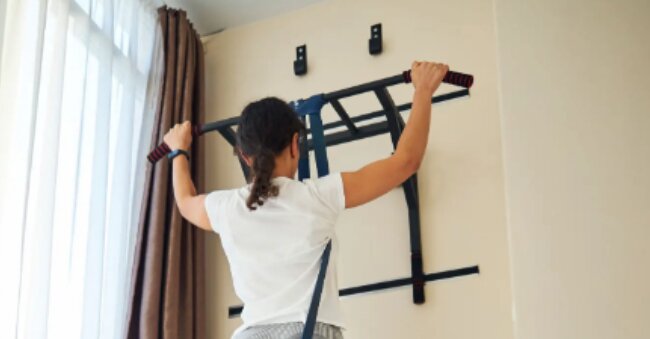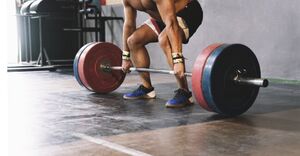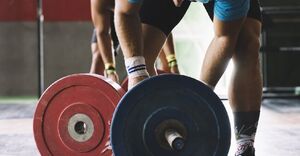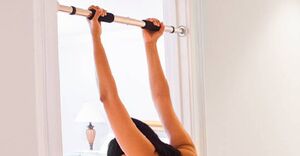
Top 4 Powerful Pull-Up Bars Compared: Doorway, Wall-Mounted, Freestanding, and Ceiling-Mounted
Looking to enhance your home workout regimen?
Pull-up bars are versatile fitness equipment that can effectively target and strengthen your upper body and core muscles. The various types of pull-up bars available include doorway, wall-mounted, freestanding, and ceiling-mounted options. Understanding the important factors to consider when selecting a pull-up bar, along with proper usage techniques, can help you maximize the benefits of your workout routine. We also discuss common mistakes to avoid to ensure optimal results from your pull-up bar exercises. Whether you are new to fitness or an experienced enthusiast, this guide provides valuable insights on how to effectively incorporate this simple yet efficient exercise tool into your routine.
What Are Pull-Up Bars?
Pull-Up Bars are a common piece of exercise equipment found in home gyms, offering fitness enthusiasts a versatile tool for strength training.
They are effective in targeting various muscle groups, such as the back, arms, and core. Regular use of pull-up bars can help individuals develop upper body strength and enhance grip strength. Including pull-up bars in one’s fitness routine provides a convenient and cost-effective option for those seeking to improve their overall physical fitness levels at home.
By trying different pull-up variations, individuals can tailor their workouts to align with their fitness objectives and consistently push themselves for improvement.
What Are the Different Types of Pull-Up Bars?
Pull-Up Bars are available in various types, including Doorway, Wall-Mounted, Freestanding, and Ceiling-Mounted options, each offering unique features and installation methods.
Doorway pull-up bars are convenient and easy to install, typically requiring no screws or drilling. They are ideal for those with limited space or renting apartments.
Wall-Mounted bars offer sturdy support and are suitable for permanent installations in home gyms or fitness studios.
Freestanding pull-up bars are versatile, allowing for placement anywhere without the need for drilling into walls.
Ceiling-Mounted bars provide a high weight capacity and stability, perfect for intense workouts and heavy users. Each type caters to different workout spaces and user preferences.
1. Doorway Pull-Up Bars
Doorway Pull-Up Bars are practical options that can be easily set up in door frames, making them suitable for users seeking space-saving and adaptable fitness equipment.
The installation process for doorway pull-up bars is usually uncomplicated, requiring minimal tools and effort. Users can securely position the bar in the door frame and adjust it to their preferred height.
Once in place, these pull-up bars offer a solid and steady platform for various upper body exercises, such as pull-ups, chin-ups, and hanging leg raises. Their adaptable design allows for various grip positions, accommodating a broad range of fitness routines and levels.
Whether one is a novice or a seasoned fitness enthusiast, doorway pull-up bars provide a convenient and efficient way to enhance upper body muscle strength.
2. Wall-Mounted Pull-Up Bars
Wall-Mounted Pull-Up Bars are known for their enhanced durability and weight capacity, as well as offering various grip options to effectively target different muscle groups.
The sturdy construction of wall-mounted pull-up bars ensures they are able to withstand intense workouts, making them a reliable and long-lasting fitness equipment choice. With weight capacities ranging from 300 to 600 pounds, these pull-up bars can accommodate a wide range of users, from beginners to seasoned fitness enthusiasts. Additionally, the array of grip options, such as wide, narrow, and neutral grips, allows users to customize their workouts to target specific muscle groups like the back, biceps, and shoulders for optimal muscle engagement and development.
3. Freestanding Pull-Up Bars
Freestanding Pull-Up Bars offer stability and adjustability, enabling users to engage in a variety of exercises and include pull-up variations in their workout routines.
These versatile fitness tools are suitable for individuals of all fitness levels, ranging from beginners to advanced athletes. The adjustable height settings and various grip options allow for customization of workouts based on personal preferences and fitness goals. Whether the goal is to increase upper body strength, enhance grip endurance, or focus on core stability, freestanding pull-up bars provide a comprehensive solution. Their robust construction ensures safety during rigorous workouts, making them a dependable addition to any home gym setup.
4. Ceiling-Mounted Pull-Up Bars
Ceiling-Mounted Pull-Up Bars have a unique design that makes use of overhead space, prioritizing user safety and providing an effective workout option while requiring specific space considerations.
These pull-up bars are suitable for individuals aiming to enhance their home gym setup without taking up floor space. The installation process typically includes securely mounting the bar onto ceiling joists or beams to ensure it can adequately support the user’s weight during workouts. Some models offer adjustable height options to accommodate various ceiling heights. Many ceiling-mounted pull-up bars come with padded grips for increased comfort and reduced hand strain during exercises. When correctly installed, these bars provide a stable and dependable platform for a variety of upper body workouts, making them a versatile choice for fitness enthusiasts.
What Factors Should Be Considered When Choosing a Pull-Up Bar?
When choosing a pull-up bar, it is important to consider factors such as space and installation requirements, weight limit, and durability, as well as versatility and additional features to guarantee an optimal fitness experience.
Space requirements are critical as they determine the placement of the pull-up bar within your home gym or living space. The weight limit and durability are essential factors in ensuring the safety and long-term use of the equipment. The versatility in grip positions and the ability to perform various exercises can improve the effectiveness of your workouts. Some pull-up bars come with adjustable height settings, padded grips for comfort, and the option to convert into a dip station, providing users with a comprehensive workout experience.
1. Space and Installation Requirements
Space and installation requirements are important factors in choosing a suitable pull-up bar, particularly for home gyms where DIY installation may be preferred for convenience and cost-effectiveness.
When considering space constraints, it is crucial to measure the available area to ensure the pull-up bar fits securely. DIY installation allows users to customize the setup to their preferences, such as adjusting the height or selecting the mounting location. Many pull-up bars include easy-to-follow installation instructions and the necessary hardware, simplifying the process for individuals interested in a home improvement project.
Opting for a DIY installation can save money and also offer the satisfaction of completing the setup independently.
2. Weight Limit and Durability
Considering the weight limit and durability of a pull-up bar is important, taking into account factors like material quality and assembly requirements to guarantee safe and long-lasting use.
When choosing a pull-up bar, it is important to prioritize strong construction. Steel and reinforced iron are commonly used materials known for their strength and resilience, able to support heavier weights while maintaining stability. The assembly process is crucial for the overall reliability of the pull-up bar, requiring careful attention to ensure correct installation and secure attachment. Opting for a sturdy and reliable pull-up bar not only improves safety during workouts but also ensures durability for prolonged use.
3. Versatility and Additional Features
The user experience can be enhanced by the versatility and additional features offered by pull-up bars, providing value-added functionalities and customizable options to accommodate diverse fitness routines.
These pull-up bars are equipped with a variety of grips and handles, allowing users to effectively target different muscle groups. Some models have adjustable height settings, making them suitable for various ceiling heights and users of different statures. Advanced pull-up bars may include integrated resistance bands or hooks for attaching other fitness accessories, enabling users to include a wider range of exercises in their workouts. With these versatile options, individuals can tailor their workouts to match their specific fitness goals and preferences.
How to Properly Use a Pull-Up Bar?
To optimize the benefits of a pull-up bar, it is important to grasp and implement proper grip and hand placement, activate the appropriate muscle groups effectively, and practice correct breathing techniques for improved performance.
When utilizing a pull-up bar, concentrate on selecting a grip that matches your comfort and strength level. Grip variations such as wide grip, narrow grip, or chin-up grip target distinct muscle groups, providing a varied workout experience. Ensure that your hands are positioned slightly wider than shoulder-width apart for standard pull-ups. When gripping the bar, strive to maintain a secure hold without exerting excessive pressure on your wrists. Engaging your core muscles and back muscles is crucial for executing a successful pull-up. Control your descent to prevent swinging and sustain tension in your muscles throughout the movement.
1. Proper Grip and Hand Placement
Understanding proper grip and hand placement on a pull-up bar is important for maintaining ergonomic form and efficiently executing various pull-up techniques to target specific muscle groups.
It’s essential to recognize that how you grip the pull-up bar significantly influences the muscles engaged during the exercise. For example, a wide grip targets the outer back muscles more, while a narrow grip emphasizes the biceps and inner back muscles. An overhand grip primarily engages the back and biceps, while an underhand grip focuses more on the biceps and forearms. By adjusting hand placement and grip style, individuals can effectively work different muscle groups, promoting overall strength and balanced muscle development.
2. Engaging the Right Muscles
Utilizing the correct muscle groups when using a pull-up bar is essential for a well-rounded workout that targets various muscle groups and enables gradual training to enhance strength and endurance.
By concentrating on specific muscle groups during pull-up exercises, individuals can improve their overall fitness level and attain better outcomes. It is important to vary grips and hand positions to effectively target different muscles, like using a wide grip to focus on the back muscles and a close grip to engage the biceps. Implementing progressive overload by progressively increasing repetitions or incorporating weights can further challenge the muscles and result in continual enhancements in strength and endurance over time. This methodical approach not only helps prevent plateaus but also optimizes muscle engagement for a more effective and efficient workout.
3. Proper Breathing Technique
Utilizing a proper breathing technique during pull-up exercises can enhance workout effectiveness and overall satisfaction. This allows users to maintain focus, control, and optimal performance throughout their fitness routine.
By focusing on controlled breathing, individuals can stabilize their core, engage the correct muscles, and reduce the risk of injury during pull-ups. Proper breathing not only improves oxygen flow to muscles, aiding in endurance and strength, but also helps in maintaining a consistent rhythm for smooth execution. With enhanced breathing control, users can better manage fatigue, push past plateaus, and maximize the benefits of their pull-up workout. This attention to breathing technique ultimately leads to a more fulfilling and rewarding fitness experience.
What Are Some Common Mistakes to Avoid When Using a Pull-Up Bar?
Avoiding common mistakes like swinging and kipping movements, neglecting full range of motion, and overtraining without allowing sufficient rest and recovery are crucial to maximizing the benefits of using a pull-up bar.
When using a pull-up bar, it is essential to focus on maintaining proper form throughout each repetition. Engage your core, keep your body straight, and avoid excessive momentum to target the muscles effectively. Overtraining can lead to fatigue, decreased performance, and even injury. Remember, rest and recovery are vital components of any workout routine to allow your muscles time to repair and grow stronger.
By prioritizing good form, appropriate training volume, and adequate recovery, you can optimize your muscle development and progress in your pull-up bar workouts.
1. Swinging and Kipping
One common mistake to avoid when using a pull-up bar is excessive swinging and kipping motions, as these can compromise training intensity and reduce the effectiveness of the workout.
Maintaining proper form is crucial to prevent injuries and achieve optimal results. Swinging excessively shifts the focus from the targeted muscles, diminishing the gains from the exercise. Kipping movements, although they can help generate momentum, may strain the shoulders and lower back if not executed correctly. By mastering control and reducing excessive momentum, individuals can maximize the benefits of pull-up exercises while minimizing the risk of overuse injuries. Consistency in training with attention to technique is key to building strength and endurance effectively.
2. Not Using Full Range of Motion
Failure to use the complete range of motion during pull-up exercises may impede muscle development and restrict the efficacy of bodyweight exercises, affecting overall progress and workout results.
Ensuring that each pull-up is performed with a full range of motion is essential for activating all the muscles involved in the movement. By fully extending and contracting the arms, more muscle fibers are engaged, leading to increased strength gains and enhanced muscle definition. This comprehensive engagement not only promotes muscle development but also aids in preventing muscular imbalances and reducing the risk of injuries.
Incorporating the full range of motion in pull-up workouts raises the level of challenge and maximizes the effectiveness of bodyweight exercises, contributing to overall fitness enhancements and the accomplishment of holistic health objectives.
3. Overtraining and Not Allowing for Rest and Recovery
Engaging in excessive training on a pull-up bar without sufficient rest and recovery can result in physical and mental challenges. This can impede progress and elevate the risk of injury due to muscle fatigue and overexertion. It is important to strike a balance between pushing your limits during workouts and allowing your body adequate time to rest and recover.
Neglecting the signs of overtraining, such as persistent fatigue, decreased performance, and irritability, can negatively impact your overall fitness journey. By including regular rest days, prioritizing quality sleep, and being attentive to your body’s cues, you can optimize your workout routine for improved outcomes and long-term wellness. It is essential to recognize that rest is just as crucial as the time spent exerting oneself at the gym.




No Comments